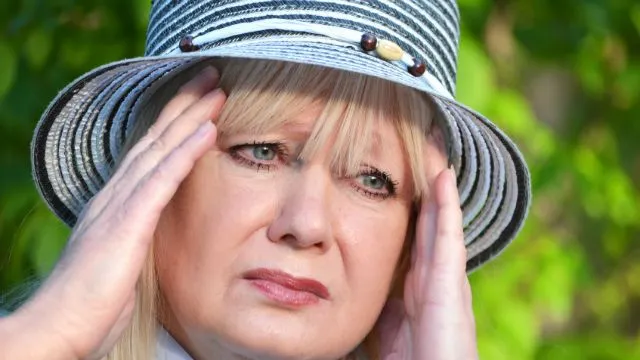
- Share on Facebook24
- Share on Pinterest
- Share on Twitter
Have you been finding yourself losing balance more often than in your younger years? Maybe you just can’t spin around with your kids or grandkids anymore without feeling nauseous, or maybe you have been experiencing more falls and stumbles as the years go on. Unfortunately, the progressive loss of balance, or equilibrium, is not uncommon.
A 2009 study performed at the University of California, Los Angeles found that structures inside the inner ear tend to change as we age. Much of these changes may be due to otoliths, structures that sit on top of hair-like cells in the inner ear. The weight of these structures causes the hair cells to sway back and forth when they sense motion.
When these structures are healthy and in abundance, we experience optimal balance, but when the brain receives mixed signals regarding their position, sensations of imbalance can occur. Another study, performed in 2007 at the University Hospital Aachen in Germany, found that otoliths change shape and lessen in number as part of the natural aging process.
This, along with other nervous system changes, can lead to balance issues. Balance problems can also occur as a result of a head injury, whiplash, stroke, spinal misalignment, virus or taking a high amount of certain antibiotics.
Do not become discouraged, however, there is much that can be done to correct imbalance and loss of equilibrium, even in older individuals. Dr. Neil T. Shepard, of the University of Michigan Medical School’s Vestibular Testing Center, says, “in the vast majority of cases of chronic balance disorders, the physical damage in the inner ear is permanent, but the effects don’t have to be because of the compensation process.”
Specifically, if the brain and inner ear are trained to readjust themselves, you can begin to feel balanced again. One way that this can be accomplished is through vestibular rehabilitation, a newer form of physical therapy focused on inner ear issues.
Vestibular rehabilitation can seem counterintuitive to some, as exercises involve doing the very motions that cause dizziness, such as spinning around, jumping, sitting up quickly from a lying-down position, and moving the head quickly from side to side while focusing on an object straight ahead.
Doing these motions repeatedly, in a controlled way so as to avoid falling and hurting yourself, causes the brain to adapt, and with practice, balance and steady vision can eventually be restored. Specific exercises are assigned on an individual basis depending on the nature of the balance issue.
Another way to regain balance and inner ear equilibrium is by doing yoga on a regular basis. This ancient practice is centered on balance, flexibility and focus. While some poses may be hard to do at first, if you have a balance issue, with time, this can dramatically improve.
Talk to your yoga instructor before class about your specific balance challenges, so the instructor can both make sure you are safe from falls during the session, and perhaps assign some specific poses to help you regain balance.
-The Alternative Daily
Sources:
http://www.nytimes.com/2014/02/25/science/where-has-my-equilibrium-gone.html?ref=science&_r=1
http://www.ncbi.nlm.nih.gov/pubmed/19834860
http://www.ncbi.nlm.nih.gov/pubmed/18413901
http://www.nytimes.com/1994/01/26/us/exercise-therapy-can-help-dizziness-from-inner-ear-ills.html
http://www.livestrong.com/article/216821-inner-ear-yoga-balance
- Share on Facebook24
- Share on Pinterest
- Share on Twitter

